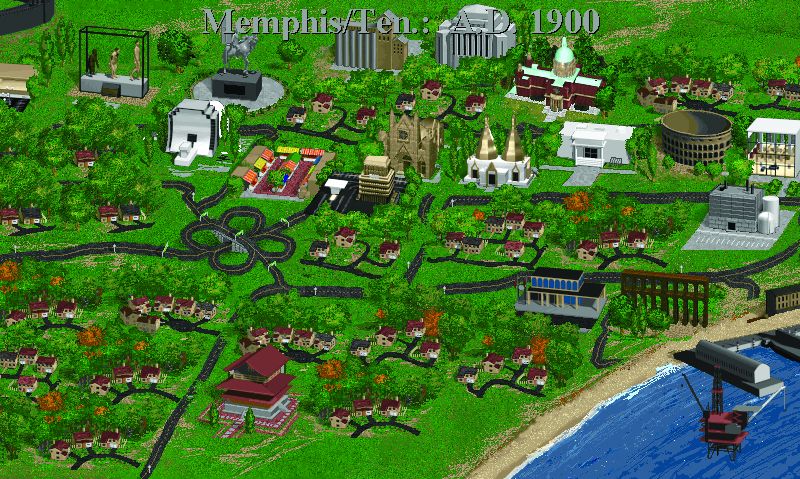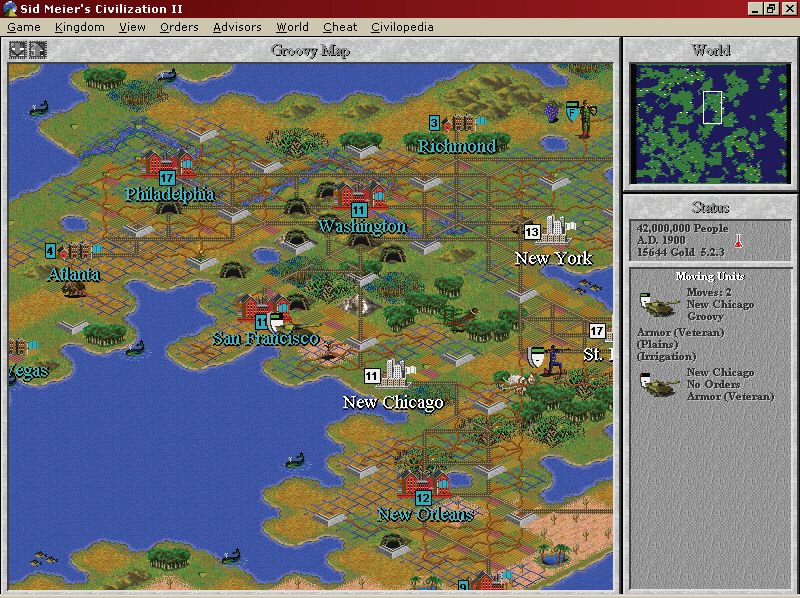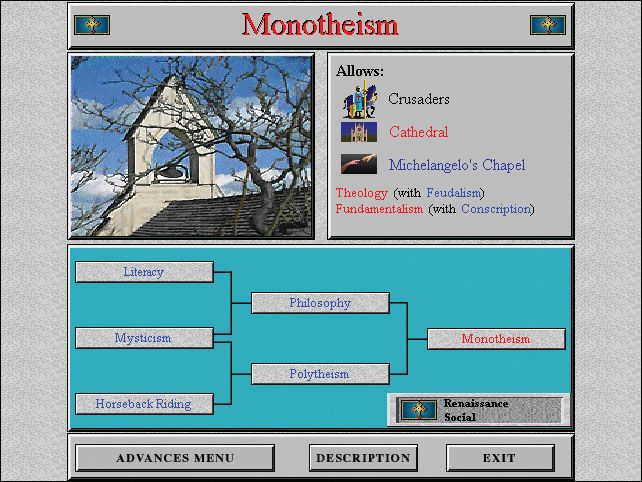The complete history of Civilization
26 years of conquest, building and Montezuma being a bit of a dick.
Civilization 2
An empire built on word of mouth.

Brian Reynolds remembers when Sid Meier gave him a copy of Civilization. “I played until 2am,” he admits. “It combined the city, units and ‘one more turn’ of Empire with the experience of Civilization the board game. Avalon Hill games were the gold standard, and I didn’t realise computer games could do that.” He was hooked.
He’d been working on adventure games, trying to compete with Sierra, but it wasn’t working out and everyone was worried about their jobs. So he started developing a prototype—a game about discovery and exploration. He showed it to Meier, and a week later he’d been moved to a new department to commence work on what would become known as Colonization.
Then SimCity 2000 came out. Its predecessor had been one of Civilization’s influences, but SimCity 2000 offered up proof that iterative sequels could work, inspiring MicroProse once again. At the same time, Reynolds was moving across the Atlantic with his wife. “I moved to North Yorkshire with a PC and a mandate to make a new game: Civilization 2000.” The three zeroes would eventually be sliced off.
In a new country, left to his own devices, Reynolds found himself tasked with an intimidating job. “Nobody had ever done a sequel to Civilisation or even another MicroProse game before. How do you make a sequel to a game that covered all of human history?” Luckily, he had a long list of desired features from players, who had taken to Usenet groups to tell MicroProse what they wanted to see. These ideas, coupled with Reynolds’ own, ran the gamut from alliances to handy notifications that your enemy had started work on one of the Wonders of the World. There was the all-new tech tree, as well, which had to be built from the ground up.


Brian Reynolds
After Civ II, Reynolds went on to design Alpha Centauri, as well as Rise of Nations.
“It all started to feel really fresh, but for reasons you couldn’t always put your finger on. They were subtle. But the executives didn’t understand. They just thought it was Civ, but for Windows.” That didn’t mean the fact that it was being designed to run on Windows 95 wasn’t important. “We were perfectly placed with the launch of Windows 95 to be successful. It was probably the first triple-A game that could run on the operating system, and we really leaned into it.” This allowed Reynolds to play around with different screens, making the UI modular, taking advantage of the OS’s strengths.
The original Civilization made it so that there was more than one way to win the game, but with Civ II, Reynolds wanted to double down on peaceful solutions. So there was the aforementioned alliance system, while peace treaties would force the other civilisation to remove its units from your areas.
The biggest gaming news, reviews and hardware deals
Keep up to date with the most important stories and the best deals, as picked by the PC Gamer team.
“We did a lot of work on diplomatic AI in Civilization II,” Reynolds stresses. “It actually quadrupled the amount of code we had to write.” These changes to diplomacy also served as the beginning of the national border system that would see use in future Civs, as well as Alpha Centauri, which Reynolds also designed.
Despite this focus, conquest wasn’t forgotten. Indeed, it was dramatically enhanced, thanks to unit hit points. The result was considerably more tactical when compared to Civilization’s basic combat. It also made the era units were from matter more. Reynolds wanted to get rid of those moments where a phalanx could stand up to a battleship.

“It was a long journey, making it more tactical,” Reynolds recollects. Master of Magic was a source of inspiration, but he still didn’t find the combat to be much fun. “There was talk of Sid working on that side of the game, but it didn’t happen. I’d already coded the idea of hit points, getting ready for what I thought was coming, and Sid was like, ‘Yeah, my prototype isn’t as fun as that,’ so I carried on.”
In 1993, MicroProse was sold to Spectrum Holobyte. There’d always been issues with the business side of MicroProse not understanding Civilization II. It was more invested in the multiplayer remake of the first game. This wasn’t helped by the fact that multiplayer wasn’t on the cards for the sequel. “I put a good amount of time into multiplayer logic for Civilisation II, but by 1995, there was no way we were going to get it in.” After the acquisition, things seemed to get worse.
“When they took over, they didn’t have confidence in the game, so they did very little marketing for it. In the end, word of mouth saved it.” The publisher estimated poor sales. By the time Reynolds left the company, it had sold 2.5 million. “It established that Civ was the type of game that could support sequels. Civ III was definitely going to happen.”

Fraser is the UK online editor and has actually met The Internet in person. With over a decade of experience, he's been around the block a few times, serving as a freelancer, news editor and prolific reviewer. Strategy games have been a 30-year-long obsession, from tiny RTSs to sprawling political sims, and he never turns down the chance to rave about Total War or Crusader Kings. He's also been known to set up shop in the latest MMO and likes to wind down with an endlessly deep, systemic RPG. These days, when he's not editing, he can usually be found writing features that are 1,000 words too long or talking about his dog.

